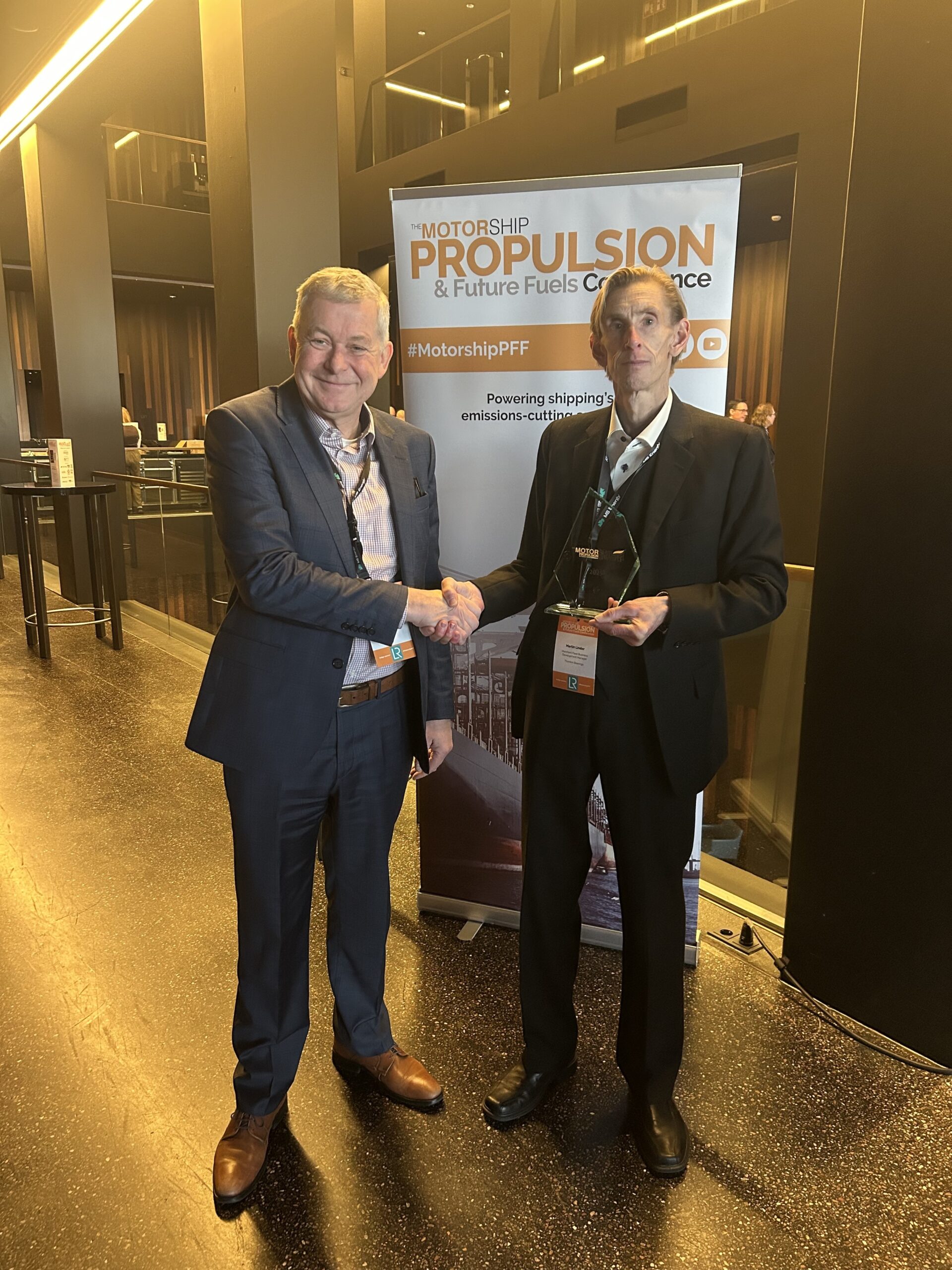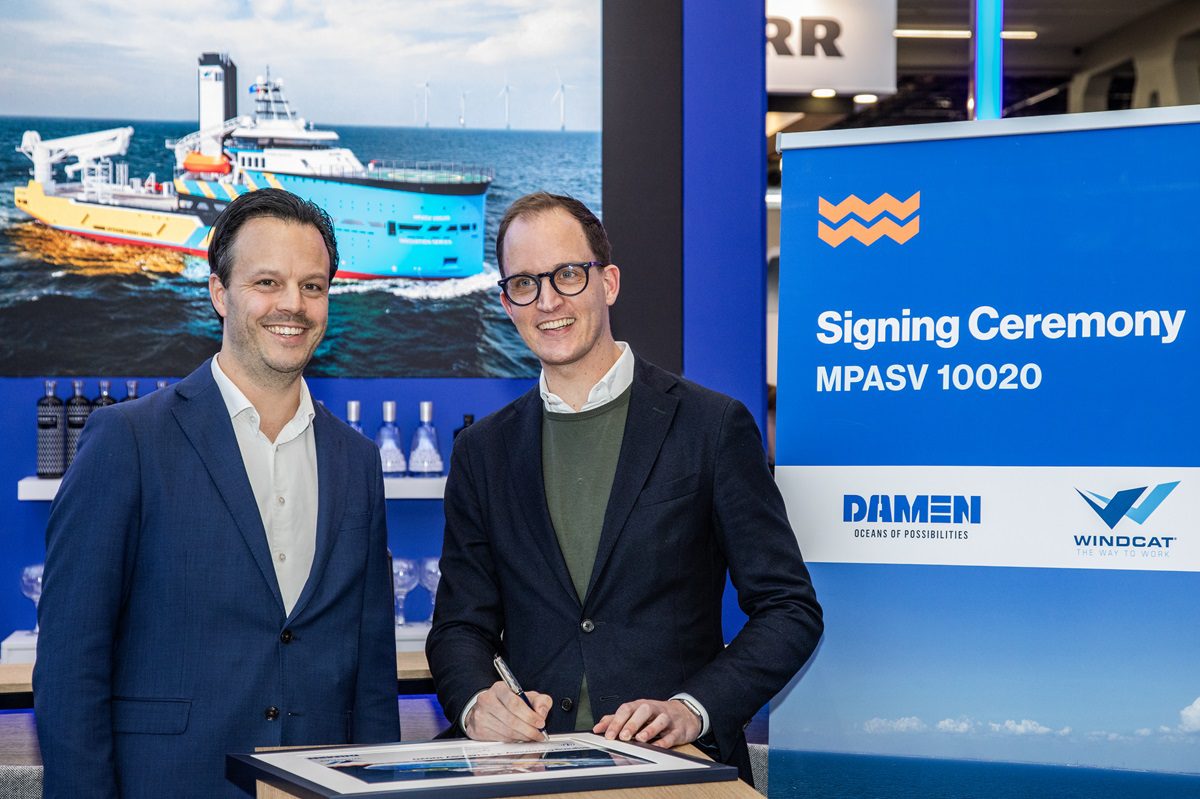MacGregor’s DNV-approved fully automatic twistlock is enabling Hapag-Lloyd to load an extra tier of containers onboard its A19-class vessels without compromising on safety.
In an era when digital technology and data-driven processes dominate discussion on improving container transport efficiency, it is sometimes easy to overlook the impact of something as simple as the humble mechanical twistlock.
Initially secured by hand, the humble twistlock has nonetheless developed alongside the evolving demands for greater efficiency from the global container industry with innovation taking it from purely manual to semi-automatic and, more recently, fully automatic operation.
While semi-automatic twistlocks are popular for their proven safety and relative simplicity, fully automatic solutions represent an increasingly attractive alternative thanks to the convenience and superior efficiency they provide. According to the world’s leading classification society DNV, fully automatic twistlocks can also play an important role in facilitating automated terminal operations, and could help to improve safety in cargo loading and discharge.
One such solution is MacGregor`s ACV-1 ‘Hippo’, which is a DNV-approved fully automatic twistlock that exceeds classification standards while helping customers maximise their stowage efficiency.
Most fully automatic twistlocks on the market deploy a locking mechanism to secure the twistlock in the container corner casting during loading and discharge. While several variations of locking mechanism are available. “Hippo uses a wire-operated mechanism that is proven to keep crucial pressure surfaces intact and thereby minimise the risk of slip-out. This makes MacGregor’s solution the safest fully automatic twistlock in the industry,” explains Arto Toivonen, Sales Manager, MacGregor.
“At DNV we have seen the evolution of the twistlock mechanism as designers have worked to find a fully automatic system that both safely secures containers and enhances loading and unloading efficiency,” says Daniel Abt, Approval Engineer, DNV. “During our testing we found that the MacGregor’s ACV-1 fully automatic twistlocks have a load-bearing capacity that almost doubles the requirements in our rules for automatic twistlocks and perform equivalently to semi-automatic systems in terms of their ability to limit the movement of container stacks during voyages.
More cargo, less risk
An operator’s choice of twistlock can also play a big role in determining how much cargo a vessel can carry while maintaining safety standards and leading container shipping company Hapag Lloyd has opted to implement Hippo across its A19 class of 19,900-TEU vessels.
“We always want to load more cargo, of course, but ensuring containers are secure on board the ship takes precedence over adding another tier,” comments Miguel Saez, Fleet Innovation Manager, Hapag-Lloyd. “If a container stack collapses, the threat to crew and the marine environment is considerable, while there are also clear financial and reputational ramifications to consider. Safety is therefore our number one concern in planning lashing systems.”
A crucial consideration when assessing the safety of a lashing system is the gap – or vertical clearance – a twistlock leaves between containers. MacGregor’s Hippo twistlocks restrict vertical clearance to 12 millimeters in accordance with updated guidelines from DNV and other major classification societies. This enables the A19 vessels to transport an extra tier of cargo, for a total of around 600 additional TEUs per ship, with the same vessel plan and cargo mix – and, crucially, no negative safety impact.
“The additional cargo-carrying capacity we gain on board our A19-class ships by implementing Hippo highlights the close interplay between safety and efficiency,” notes Mr. Saez. “It also results in a quick return on investment, which made this project, despite its extensive scale, an easy sell from a business perspective, too.”
Forged for safety and sustainability
Hippo’s performance is partly attributable to how the system is manufactured. MacGregor’s twistlocks are forged rather than casted, creating a denser structure that provides high tensile strength, durability, and resistance to extreme conditions. Forging also makes Hippo a greener alternative to cast twistlocks, explains Toivonen.
“Third-party testing confirms that our forging process reduces carbon dioxide emissions by around 40% compared to casting,” he says. For the A19 vessels, which we supplied with 25,000 twistlocks each, this will significantly reduce the carbon emissions at the manufacturing phase. Hippo will also reduce the voyage carbon intensity by enabling the vessels to carry more containers with the same amount of fuel consumed compared to before the upgrade. This aligns with Hapag-Lloyd’s operational efficiency and sustainability objectives.”
In addition, Hippo is easy to install and operate, while its maintenance-free design eliminates the need for greasing, Toivonen adds.
A partnership built on transparency and expertise
Explaining Hapag Lloyd’s motivation for specifying Hippo twistlocks, Mr. Saez emphasises their safety, efficiency, and sustainability benefits. He also points to MacGregor’s capacity to provide
a comprehensive scope of supply, its understanding of Hapag-Lloyd’s operational requirements, and the transparent, trust-based relationship the two companies share.
“MacGregor offers a wide range of equipment needed for securing cargo – not just twistlocks but also lashing bridges, loose lashing equipment, hatch covers, and more,” says Mr. Saez. “Projects are expertly tailored to our specific needs, and we are free to ask questions, request changes, and verify everything with DNV. Finding a partner who understands operational requirements as well as they understand technical factors is difficult – but that’s exactly what we get with MacGregor.”
Tags:

 Join The Club
Join The Club











